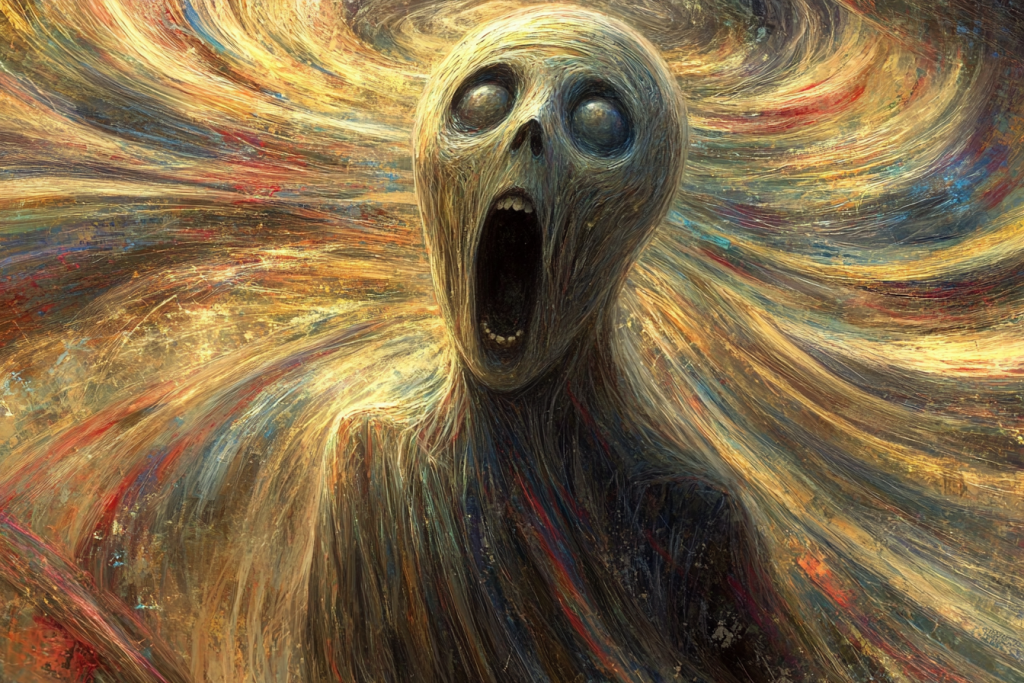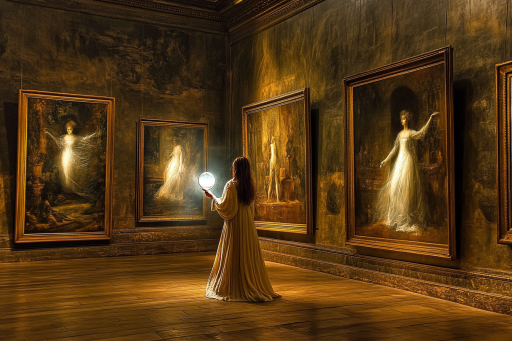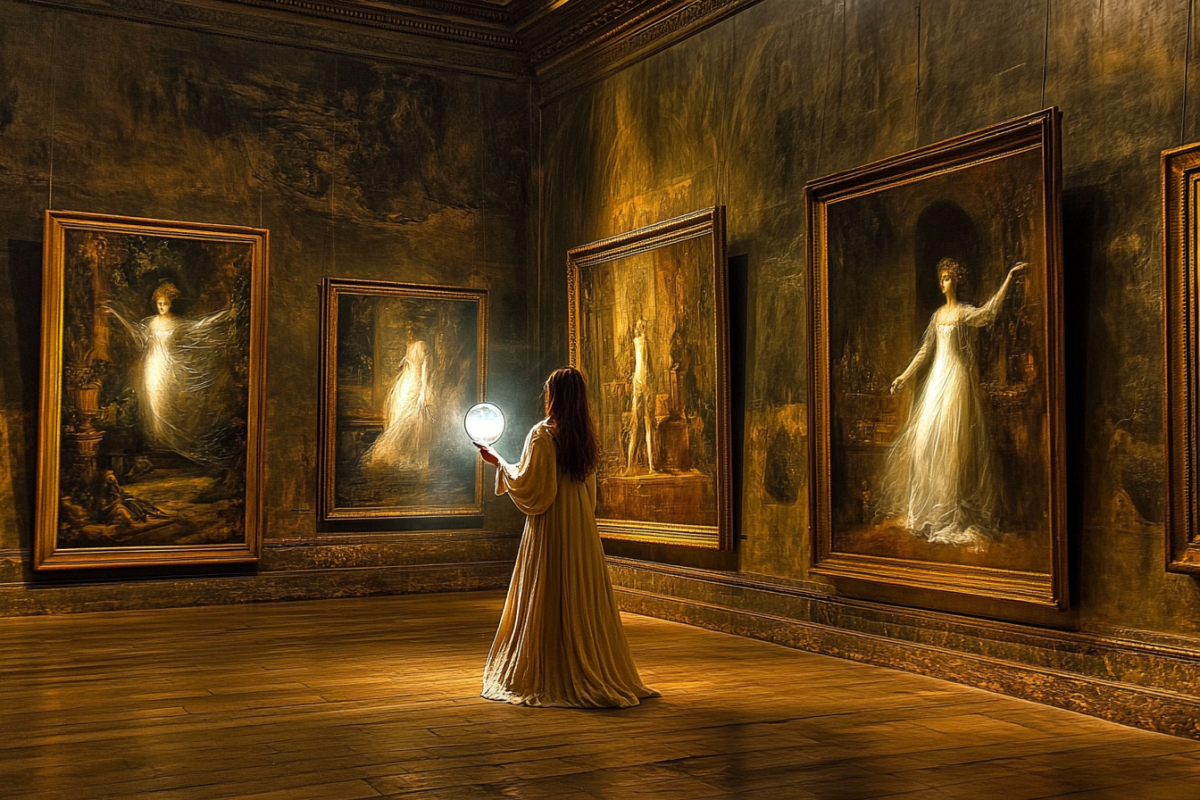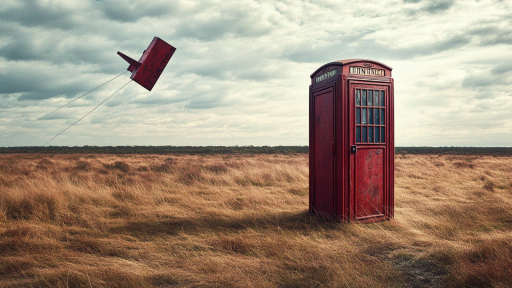
Throughout history, artists have embedded hidden messages in their works, some of which remained undiscovered for centuries. Whether concealed in brushstrokes, hidden under layers of paint, or woven into ancient symbols, these secrets often tell stories far beyond what the eye can see. Some reveal lost histories, while others hint at secret societies, forgotten knowledge, or even encoded warnings. Were these messages left as puzzles for future generations, or did their creators intend for them to remain forever unseen?
The Hidden Skull in Hans Holbein’s “The Ambassadors”

At first glance, The Ambassadors by Hans Holbein the Younger appears to be a standard Renaissance portrait of two noblemen. However, when viewed from a specific angle, a distorted skull emerges in the foreground—an eerie reminder of mortality, hidden in plain sight. Some believe this was a secret reference to the fleeting nature of power and wealth. Could this be a message about the inevitable fate that awaits everyone, no matter their status?
Da Vinci’s Secret Music in “The Last Supper”

Leonardo da Vinci’s The Last Supper has fascinated historians for centuries, but one researcher discovered something truly astonishing—hidden sheet music encoded in the painting. By overlaying musical notes onto the placement of the bread and hands of the apostles, a haunting melody emerges. Was this da Vinci’s way of embedding a sacred hymn, or does it hold a deeper, unknown significance?
The Mysterious Code in the Mona Lisa’s Eyes

The Mona Lisa has long been studied for its enigmatic smile, but researchers found something even more mysterious—tiny letters and numbers hidden in her eyes. Under magnification, the initials “LV” appear in one eye, possibly Leonardo da Vinci’s signature, while the other contains barely visible symbols. Were these markings intentional clues, or did the artist leave a riddle that has yet to be fully understood?
The Hidden Devil in Michelangelo’s “The Sistine Chapel Ceiling”

Michelangelo was known for his defiance of authority, and some believe he hid a rebellious message in his masterpiece on the Sistine Chapel ceiling. A section of the painting appears to contain the face of a devil concealed within the folds of a robe—placed strategically near the figure of God. Was this Michelangelo’s way of mocking the Church, or was it a mere coincidence?
The Anatomical Brain in Michelangelo’s “The Creation of Adam”

One of the most famous sections of the Sistine Chapel ceiling, The Creation of Adam, may contain a hidden anatomical message. When overlaid with medical diagrams, the shape behind God closely resembles the human brain, including the cerebellum and brainstem. Could Michelangelo have secretly symbolized the connection between divine inspiration and human intellect?
The Hidden Faces in Caravaggio’s “Bacchus”

In Caravaggio’s Bacchus, an otherwise traditional painting of the Roman god of wine, a strange reflection was found in a glass carafe. Upon closer examination, it reveals what appears to be a self-portrait of Caravaggio himself—hidden in the liquid. Was this an artist’s playful signature, or was he leaving behind a cryptic message about illusion and reality?
The Unfinished Man in Botticelli’s “Primavera”

Sandro Botticelli’s Primavera is a masterpiece of the Renaissance, filled with mythological figures. But art historians discovered something bizarre—a faint outline of an unfinished man’s face hidden in the background, as if Botticelli started a figure and then painted over it. Why was this figure erased? Could it have represented a forgotten figure from history?
The Hidden Pagan Symbols in Christian Art

Many early Christian artworks contain symbols that predate Christianity, hidden in plain sight. Some paintings of Jesus incorporate sun disks, borrowed from earlier pagan gods, while others feature secret references to ancient mystery cults. Were these hidden symbols meant to convert pagans subtly, or did they suggest a deeper, forgotten connection between religious traditions?
The Secret Astronomical Map in Van Gogh’s “Starry Night”

Vincent van Gogh’s Starry Night is known for its swirling skies, but some researchers believe it may contain a hidden star map. By comparing the positions of the celestial bodies in the painting with actual night skies, astronomers found a striking resemblance to the stars visible on that very night in 1889. Was van Gogh capturing the heavens with scientific precision, or did he have a deeper understanding of the cosmos?
The Hidden Portrait Beneath the Surface of a Da Vinci Painting

Using modern scanning technology, researchers uncovered a secret beneath one of Leonardo da Vinci’s paintings—an entirely different portrait concealed under layers of paint. The hidden figure, a different woman with a different expression, suggests that da Vinci changed his vision or covered up something significant. Was this an abandoned idea, or was he hiding a subject whose identity was meant to remain unknown?
The Ghostly Skull in Edvard Munch’s “The Scream”

Edvard Munch’s The Scream is already unsettling, but some art historians believe a hidden skull is embedded within the swirling colors of the sky. When examined closely, the shapes align eerily with the contours of a human skull, adding another layer of existential dread to the already haunting painting. Was Munch subconsciously including a symbol of death, or was it a deliberate artistic choice?
The Shadowy Figure in Rembrandt’s “The Night Watch”

Rembrandt’s The Night Watch is filled with dramatic lighting and movement, but there is an odd, shadowy figure lurking in the background. Some believe this could be an unfinished self-portrait or a hidden patron. Could Rembrandt have embedded a ghostly presence, forever watching the viewer from within the painting?
The Mysterious Hand in Raphael’s “The School of Athens”

In Raphael’s The School of Athens, one detail has puzzled art historians for centuries—a floating hand that belongs to no visible figure. While the surrounding philosophers are carefully positioned, this hand appears disconnected from any body, as if it belongs to an unseen figure. Was this an artistic error, or did Raphael intend to leave an eternal mystery within his masterpiece?
The Hidden Numbers in the Frescoes of Pompeii

When archaeologists uncovered the ruins of Pompeii, they found frescoes depicting daily life in ancient Rome. But some of these artworks contained hidden numbers and symbols embedded within the designs, possibly serving as secret codes or messages. Were these meant to pass on information about the people of Pompeii, or were they part of an unknown ancient language?
The Secret Self-Portrait in Jan van Eyck’s “The Arnolfini Portrait”

Jan van Eyck’s The Arnolfini Portrait is filled with rich symbolism, but one tiny detail reveals something extraordinary—a hidden self-portrait. In the convex mirror at the center of the painting, a small reflection shows two additional figures, one of whom is believed to be van Eyck himself. This tiny but deliberate addition suggests that the artist left behind a secret signature, forever observing his own work from within. Was this a simple artistic flourish, or was he embedding a deeper meaning about perception and presence?
The Art That Speaks Without Words

For centuries, hidden messages have lurked beneath the surface of masterpieces, waiting for the right moment to be uncovered. Whether these secrets were intentional puzzles, concealed warnings, or simply the artist’s private jokes, they challenge how we view art and history. What other mysteries remain undiscovered in the works of the past? Perhaps the greatest secrets are still hidden, waiting for the world to see them.





